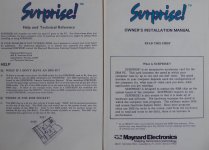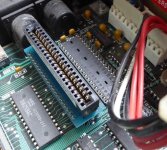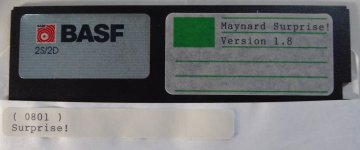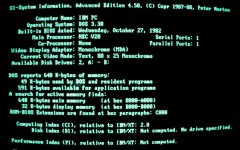mmruzek
Experienced Member
I recently purchased an IBM PC 5150 with an unusual CPU Accelerator option. It is the Maynard Electronics SURPRISE! board. This device comes with a 40 pin CPU socket adapter that converts the 8088 CPU location into a small edge card socket. (See photos). The card socket accepts a small PCB board with a NEC V20 CPU and support logic.




The manual states "The SURPRISE! card is an inexpensive accelerator card for the IBM PC. This card increases the speed at which you computer runs by up to two and one half times." "SURPRISE! is also unique in that it is made up of hardware and software. The hardware increases the speed at which the computer runs programs. The software makes DOS and screen functions happen faster."
I am in the process of experimenting with this device. I am wondering if anyone else on VCF is already using one? Also, this looks like a setup that would be fairly easy to clone. The only challenge I see there are the 2 PAL devices, which I don't have experience reading and writing... my understanding is that these can be copy protected with a fuse? Would that be a show stopper? Thanks!
Michael




The manual states "The SURPRISE! card is an inexpensive accelerator card for the IBM PC. This card increases the speed at which you computer runs by up to two and one half times." "SURPRISE! is also unique in that it is made up of hardware and software. The hardware increases the speed at which the computer runs programs. The software makes DOS and screen functions happen faster."
I am in the process of experimenting with this device. I am wondering if anyone else on VCF is already using one? Also, this looks like a setup that would be fairly easy to clone. The only challenge I see there are the 2 PAL devices, which I don't have experience reading and writing... my understanding is that these can be copy protected with a fuse? Would that be a show stopper? Thanks!
Michael

